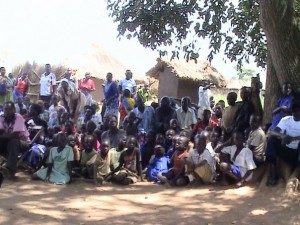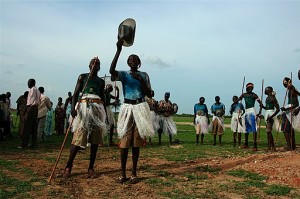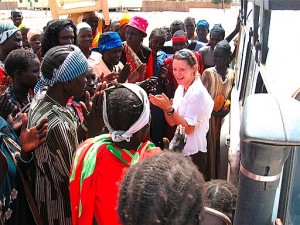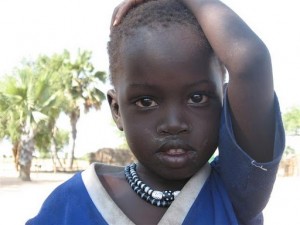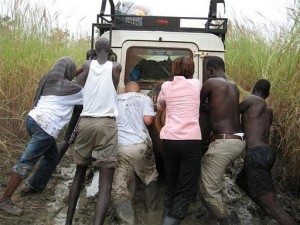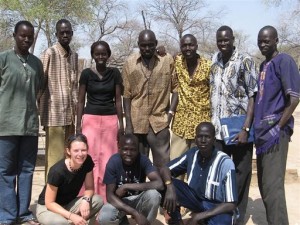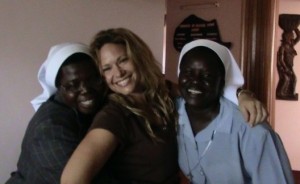 Yesterday I shared with you some of the background on our Reality Tours trips to Uganda. Today in Part 2 of this two-part series, you’ll read my firsthand account of traveling on a Reality Tours trip to Uganda:
Yesterday I shared with you some of the background on our Reality Tours trips to Uganda. Today in Part 2 of this two-part series, you’ll read my firsthand account of traveling on a Reality Tours trip to Uganda:
—
Follow along on a Reality Tours trip to Uganda
Arriving into Kampala I recall the delightful heat of the air. I had to wait in line to purchase my visa and was behind a group of missionaries from the US who were eager and complaining about the slow speed of our processing. I felt awkward about one of the gentleman’s statements about bringing God to “these people” and decided not to engage in a discussion about salvation and religion at that moment. Instead, I pondered about what I was about to experience, and the stereotypes I brought with me.
After arriving at the airport I was met by one of the hotel staff and was whisked away into the night for a long drive to the hotel. There I met up with some fellow trip participants, a group of free spirited students from Suffolk University. We sat and talked about our first day in Uganda. These young women knew the issues and were really excited and nervous to meet with youth from Sister Rosemary’s Girl’s Tailoring project the next day.
Over the course of the next week and a half we met with many individuals and organizations that are committed to rebuilding their communities and lives. We met with folks who work to rehabilitate and provide psychological support services to children who are former “child soldiers” and “bush brides”.
Here are highlights from some a of the many amazing stories that came out of this inspiring trip to Uganda:
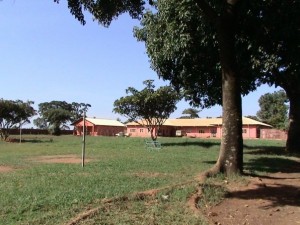 Meeting with “Child Mothers”: Picture a large living room shared by about two dozen North Americans and two dozen Ugandans. We had invited two women from some of the groups working with the child soldiers in Gulu and Lara to travel to Kampala to meet with our group, share their stories and exchange. What a fabulous encounter this was.
Meeting with “Child Mothers”: Picture a large living room shared by about two dozen North Americans and two dozen Ugandans. We had invited two women from some of the groups working with the child soldiers in Gulu and Lara to travel to Kampala to meet with our group, share their stories and exchange. What a fabulous encounter this was.
First we met with Sister Rosemary Nyirumbe who is the Director of the St. Monica’s Girls Tailoring School located next to a refugee camp in Gulu, Uganda. Her school works with ‘child mothers’ -a term Ugandans use to describe women ages 12 to 18 who were abducted child soldiers.
During our visit, the young women shared personal stories of abduction and rape by their captors, their struggles to survive and their hopes for their future and for those with children, their families’ future.
The next day we were joined by Lina Zedriga (who now runs the Trauma Healing And Reflection Centre-Gulu or THRACE-GULU) and heard similar but unique experiences shared by the youth under her care. Lina is a lawyer and magistrate who has tirelessly advocated for women, peace and security. We all listened silently to story after story told by the courageous young people, each of us connecting to the stories, some of us with tears, some of us with clenched arms, and others feverishly taking notes.
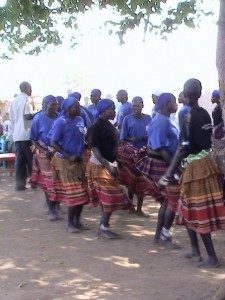 This was quite a moment for many of us, including the children who were able to listen and share with each other their stories of struggle. For many this was their first visit to the capital. As one of Lina’s girls spoke, she had to stop and gather herself to resume her story. Her strength was admirable.
This was quite a moment for many of us, including the children who were able to listen and share with each other their stories of struggle. For many this was their first visit to the capital. As one of Lina’s girls spoke, she had to stop and gather herself to resume her story. Her strength was admirable.
As the exchange ended, we dispersed after hugs and thank you’s, ready to break for a spell before dinner. Some of the youth went off to play soccer. Over dinner our group processed and discussed, but also shared moments of laughter, a choir of voices, all of us mingling, talking, and sharing. I closed my eyes and listened to giggles and heard people talking about music and the best places to dance. Plans were made for groups to go out and enjoy some local night life.
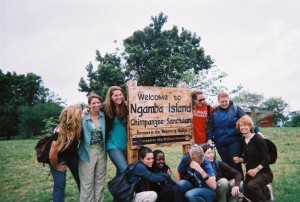 Friendships had been made. I wrote in my journal that night a rhetorical question:
Friendships had been made. I wrote in my journal that night a rhetorical question:
“How can one so young, so innocent, see so much brutality, endure so much pain, inflict pain on others still find the internal reserve to live, laugh, heal and dance?”
I left Uganda imprinted with the faces of the children I met, remembering the image of one of them carrying a 25 kilo sack of sugar on her head into the bush, starting off on her hours-long trek. This travel experience left me with an amplified respect for the tenacity of the human spirit and with a broader understanding about our human capacity to endure, feeling compelled to hear truth, unconditionally love and take a stand.
Join Us on an Upcoming Reality Tours Trip to Uganda! Learn more by joining us in Uganda this year. Visit our website for all you need to know about upcoming trips to Uganda.
Watch this great series! Check out Bridge the Gap’s Uganda Series, a wonderful web-based TV program that highlights some wonderful transformational stories, including linking Uganda and community development to the importance of Fair Trade (through bees!) Here’s a spot on Bridge the Gap about Global Exchange:
2011: Global Exchange: join the network for people’s globalization! from Global Exchange on Vimeo.


